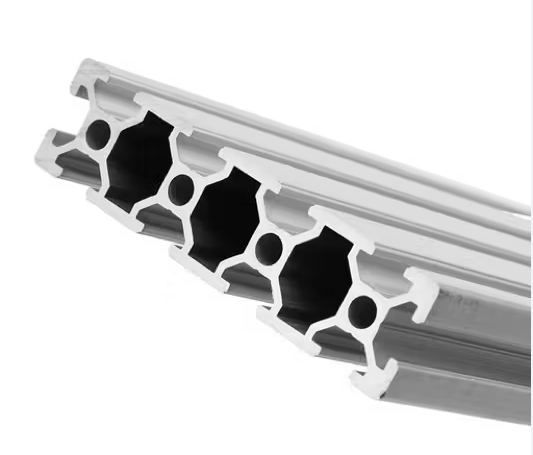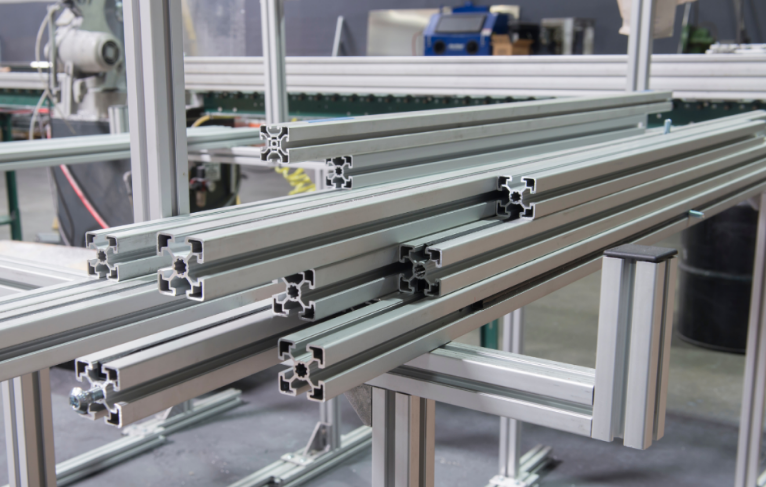Aluminum is the most commonly used metal in extrusion, favored for its lightweight, strength, and versatility.
Overview of Metals in Extrusion
Properties of Metals for Extrusion
Different metals bring unique properties to the extrusion process, making them suitable for various applications. Key properties to consider include:

Malleability and Ductility: Essential for the metal to be shaped effectively without cracking.
Strength and Durability: Crucial for ensuring the longevity of the final product.
Heat Conductivity: Important for controlling the extrusion process, as different metals react differently to heat.
Cost Efficiency: A significant factor, as some metals are more affordable than others.
For example, aluminum is highly malleable and conducts heat efficiently, making it ideal for extrusion. On the other hand, steel, though stronger, requires more energy to extrude due to its lower malleability and higher melting point.
Comparison of Common Metals Used
The most commonly used metals in extrusion include aluminum, steel, and copper, each serving specific purposes:
Aluminum: Widely favored for its lightweight nature and strength-to-weight ratio. It’s also cost-effective, with prices around $0.80 to $1.20 per pound.
Steel: Offers higher strength and durability, making it suitable for heavy-duty applications. However, it is more expensive and harder to work with than aluminum.
Copper: Known for its excellent electrical and thermal conductivity, it’s often used in electrical applications. Copper, however, can be costly, sometimes exceeding $3 per pound.
Each metal has its advantages and challenges. Aluminum’s versatility and cost-efficiency make it the most popular choice for extrusion, but steel and copper are indispensable for applications where their specific properties are required. For a deeper dive into the properties of these metals, visit Metals in Extrusion on Wikipedia.
Aluminum in Extrusion
Aluminum is a primary metal used in extrusion for its unique properties and wide range of applications. Below is a detailed table outlining the characteristics of aluminum for extrusion and its various applications:
| Characteristic/ Application | Details |
|---|---|
| Malleability | High malleability allows for easier shaping during extrusion, reducing machinery stress. |
| Strength-to-Weight Ratio | Aluminum provides excellent strength while being lightweight, ideal for automotive and aerospace applications. |
| Corrosion Resistance | Naturally resistant to corrosion, making it suitable for outdoor and marine applications. |
| Thermal Conductivity | High thermal conductivity is beneficial for heat exchangers and electronic cooling systems. |
| Cost | Relatively cost-effective with prices around $0.80 to $1.20 per pound, balancing quality and affordability. |
| Automotive Industry | Used for frames, railings, and body panels due to its strength and lightweight nature. |
| Construction | Widely used for window frames, doors, and structural supports. |
| Consumer Electronics | Essential in laptop frames, mobile phones, and other gadgets for its heat dissipation properties. |
| Packaging | Utilized in food and beverage containers for its non-toxic and protective qualities. |
Advantages of Aluminum Extrusions:
Versatility: Aluminum can be extruded into complex shapes and sizes, catering to a diverse range of industries.
Recyclability: Highly recyclable, contributing to environmental sustainability.
Challenges:
Limited Strength: For applications requiring extremely high strength, other materials like steel might be more appropriate.
Aluminum’s combination of malleability, strength, corrosion resistance, and thermal properties make it an ideal choice for extrusion in various sectors. Its cost-effectiveness and recyclability further enhance its appeal in manufacturing. For further reading on aluminum extrusion, Aluminum Extrusion on Wikipedia provides more information.
Benefits of Using Aluminum in Extrusion
Cost-Effectiveness of Aluminum
Aluminum stands out in extrusion for its cost-effectiveness. Compared to other metals like steel or copper, aluminum is more affordable, typically priced between $0.80 to $1.20 per pound. This cost advantage is significant, especially for large-scale production. The lower melting point of aluminum also translates to reduced energy consumption during the extrusion process, leading to further savings in terms of power costs. This aspect makes aluminum a go-to choice for manufacturers looking to balance quality and budget.
Strength-to-Weight Ratio and Versatility
The strength-to-weight ratio of aluminum is a key advantage in its use for extrusion. Despite its light weight, aluminum offers considerable strength, making it ideal for structural components in automotive and aerospace applications where reducing weight is crucial for performance and fuel efficiency.
Versatility: Aluminum’s malleability allows for a wide range of complex shapes and sizes in extrusion, making it versatile for various applications, from construction materials to intricate components in electronics.
Durability: Its natural corrosion resistance ensures longevity, reducing the need for frequent replacements or maintenance.
Limitations: While aluminum is strong for its weight, certain applications requiring higher strength or heat resistance might necessitate alternative materials.
For additional insights, Aluminum in Extrusion on Wikipedia provides comprehensive information.
Extrusion Process with Aluminum
Techniques in Aluminum Extrusion
Aluminum extrusion involves several key techniques that contribute to its widespread use in manufacturing:
Direct Extrusion: The most common method, where aluminum billets are pushed through a die. It’s efficient for high-volume production, although it requires substantial power, typically involving presses ranging from 500 to 6,000 metric tons in force.
Indirect Extrusion: Less common, but reduces friction and can produce more complex shapes. This technique is ideal for delicate profiles where precision is paramount.
Cold Extrusion: Done at or near room temperature, this technique is excellent for producing aluminum parts with superior strength and surface finish.
Each method offers distinct benefits, and the choice largely depends on the product requirements and production scale.
Quality and Precision in Aluminum Extrusion
Aluminum extrusion is renowned for its ability to maintain high quality and precision in the final products:

Dimensional Accuracy: Advanced machinery and tooling enable extrusion to achieve tight tolerances, essential for critical applications like aerospace components.
Surface Finish: Aluminum extrusions often feature excellent surface quality, reducing the need for additional finishing processes.
Consistency: Modern extrusion techniques ensure uniformity across large production runs, crucial for industries requiring high repeatability.
Challenges: While aluminum extrusion is highly efficient, it requires careful control of temperature and pressure to maintain quality, especially for complex profiles.
For a deeper exploration, Aluminum Extrusion Techniques on Wikipedia offers further insights.




